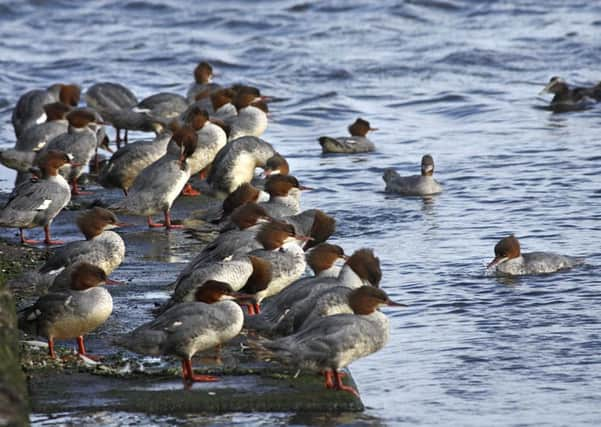Why culling these extraordinary ducks won’t save Scotland’s wild salmon – Jonny Hughes


They are also piscivorous, pursuing their prey in freshwater streams and rivers where they swim fast underwater and use their long, serrated bills to hook fish of up to 30cm. They are known to take a range of species including sticklebacks and roach but it is their fondness for salmon and trout which has brought them into conflict with the angling community, some of whom blame goosanders and other piscivorous birds like cormorants, for the steep declines being seen in salmonid populations in rivers across Britain.
The Anglers Trust has been running a ten-year campaign to increase the national limit on the number of cormorants that can be shot each year and for a reduction in the evidence requirements to control goosanders.
Advertisement
Hide AdAdvertisement
Hide AdLast week, it came to light that Scottish Natural Heritage has granted licences for the killing of a “significant number” of goosanders and cormorants on the River Tweed where it is claimed they may be a factor in recent salmonid declines.
The total salmon catch on the Tweed last year was just 6,129, a drop from the previous year when 7,003 were caught and more than 15,000 catches down from five years ago. Similarly, the sea-trout catch dropped from 2,594 in 2017 to a meagre 1,158 in 2018. Across Scotland, wild salmon and trout numbers have declined by 70 per cent in just two decades.
In contrast, goosander numbers are on the rise. The first recorded breeding pair in Britain was in Perthshire in 1871 but they have long since spread out from Scotland deep into England and Wales. The RSPB estimates there are now 3,100 to 3,800 breeding pairs and over 12,000 wintering birds. On the Tweed, there are reports that flocks of goosanders 50 to 100 strong are regularly seen hunting together. Could they be to blame for salmon and trout declines on the Tweed and elsewhere?
One way of trying to answer this question is to look at what the birds which are due to be shot under licence have been eating. The Centre of Ecology and Hydrology is planning to do exactly this kind of dietary analysis. If we know the approximate numbers of goosanders feeding on the Tweed, what fish they are taking and how much they are eating, it should be possible to calculate whether they are having a significant effect on salmon and trout.
It is likely the study will conclude there is some impact from piscivorous birds but also that other factors are far more important. These include the warming of oceans and rivers which is disrupting salmon migration and feeding patterns. Other threats include sea lice from salmon farms which can be a significant cause of mortality on nearby wild fish populations.
Salmon are also susceptible to even very low levels of pollutants like crude oil which cause lasting cardiac defects. Then there is the problem of introgression, arising from wild and farmed salmon inter-breeding, which reduces population productivity.
We should be careful not to use goosanders as scapegoats for the many pressures facing wild salmonids. Let’s avoid demonising these wonderful birds and ensure any culls are proportionate and science-based, while resisting demands for any mass killings justified by ‘fisherman’s tales’.
Jonny Hughes, Scottish Wildlife Trust chief executive, is on Twitter @JonnyEcology